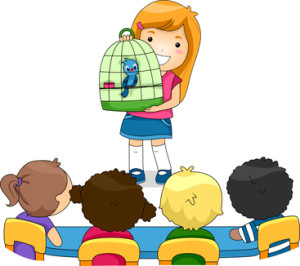 Do you remember “show and tell” from grade school? You would bring something you valued to share with your classmates, letting them see the object as you talked about it. Depending on what you brought, you might explain how it worked or why it was so special. Having the item with you for them to see helped them understand why it was special to you.
Do you remember “show and tell” from grade school? You would bring something you valued to share with your classmates, letting them see the object as you talked about it. Depending on what you brought, you might explain how it worked or why it was so special. Having the item with you for them to see helped them understand why it was special to you.
For the past two weeks I have blogged about why you need to focus on emotions when you want to reach people and have them recognize the value of the school library program. Go back to your childhood “show and tell” experiences and recall how effective you were when you communicate emotionally. Some of the same principles will help you as you craft the best way to deliver your message to key stakeholders.
Many of you blog, and if you don’t you should consider it. Your blog is a vehicle for sharing the value of your program in a meaningful way. Feature what students are doing in the library. Include some individual explorations along with class projects. My favorite blog is Buffy Hamilton’s Unquiet Librarian. (I recommend you subscribe to it for her great ideas.) She often shows the process of how students are learning and enjoying their discoveries over several weeks.
I particularly liked her post on Markerboard Surfaces, Collaborative Conversations, Academic Literacies, and Libraries. The many pictures addressed two areas that resonate with administrators and boards of education: students engaged in active learning and how a new purchase is making an impact (money well-spent). In other posts students are interviewed and talk about their learning experiences. The visuals are what is compelling. Even if stakeholders don’t take time to read the post, they will see students in action and watch a video of them talking.
If you are not ready to take on the task of writing a blog on a regular basis, consider how you sent reports to your supervisor/administrator. It’s imperative to keep them informed about what is happening in the library or you will be another librarian who says, “My principal doesn’t know what I do.” Part of your job is to ensure your principal is aware of what you do. Which is another way of saying s/he knows how valuable you are.
Most of you don’t have time for monthly reports unless they are required, but you should at least send out a quarterly one. The format for the report is critical. A text-based report listing what was accomplished, the number of classes and departments using the facility and books circulated and databases are worthwhile data but it won’t be retained without that emotional content.
 Students and visuals give you that content. Deborah Gottsleben, a New Jersey librarian I know well, sends her reports using a variety of web resources. She has done them with Animoto and Vimeo choosing a different method each time. She reminded me she has also used Issu and most recently Piktochart to create an infographic for the report.
Students and visuals give you that content. Deborah Gottsleben, a New Jersey librarian I know well, sends her reports using a variety of web resources. She has done them with Animoto and Vimeo choosing a different method each time. She reminded me she has also used Issu and most recently Piktochart to create an infographic for the report.
To get your message out and have stakeholders “buy” into the library program, lead with emotion. Students pack the emotional punch and are the vehicle for carrying the data in a meaningful way.
So one more lesson from kindergarten. Learn once again to Show and Tell.

